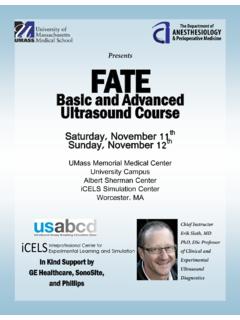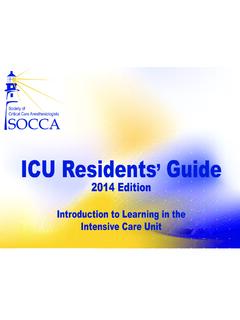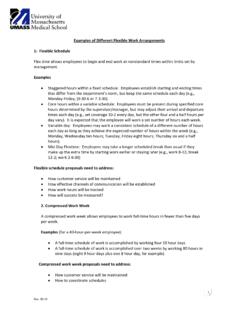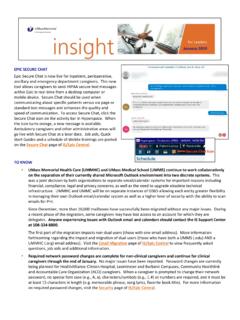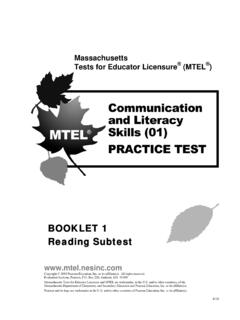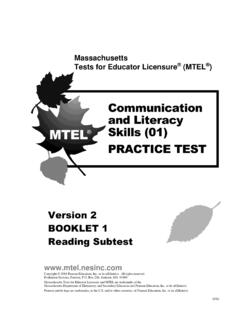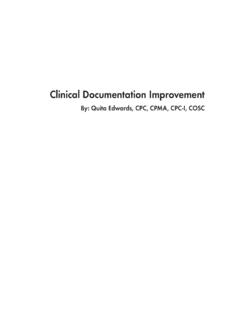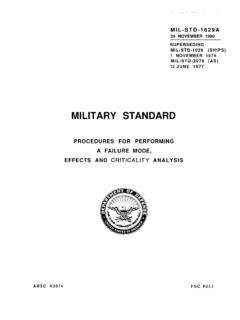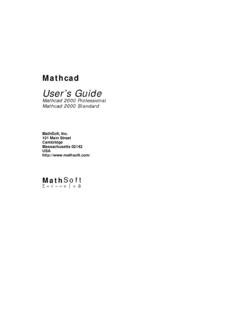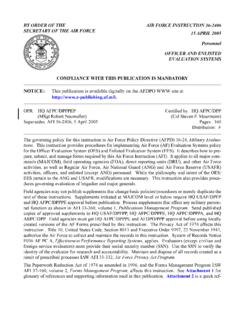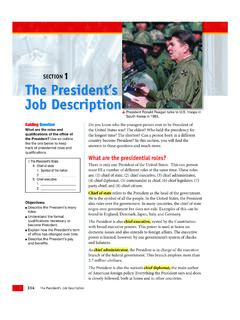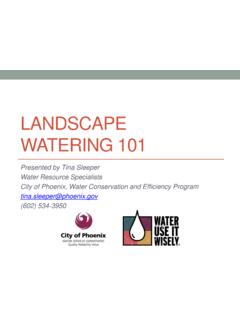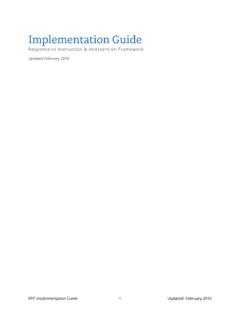Transcription of T H E MISSION CONSUMER WORKBOOK
1 Maintaining Independence and Sobriety through Systems Integration, Outreach, and Networking:David A. Smelson, Kline, Marzilli, TrippThis Treatment Manual was supported by grant # TI16576funded by the Center for Substance Abuse Treatment,Substance Abuse and Mental Health Services Administration,US Department of Health and Human H EMISSIONCONSUMERWORKBOOKM I S S I O N C o n s u m e r W o r k b o o k Table of Contents Acknowledgements .. to Part 1 ..10 Section a. Self-Guided exerciSeS ..12 ExErcisE 1. rElapsE prEvEntion plan ..12 Relapse Prevention Plan Worksheet (sample) ..14 Relapse Prevention Plan Worksheet ..16 ExErcisE 2. prEvEnting and coping with strEss ..18 Stress Worksheet (sample) ..19 Stress Worksheet ..21 ExErcisE 3. picBa, a tool for proBlEm solving ..22 PICBA Worksheet (sample).
2 23 PICBA Worksheet ..28 ExErcisE 4. moving through thE fEar ..32 Moving through the Fear Worksheet (sample) ..33 Moving through the Fear Worksheet ..36 ExErcisE 5. crEating thE lifE that You Life You Want Worksheet (sample) ..39 The Life You Want Worksheet ..43 Section B. checkliStS .. c. dual recovery theraPy: toolS and readinGS ..521. onsEt of Timelines Worksheet (sample) ..55My Timelines Worksheet ..562. lifE proBlEm arEas ..57 Personal Life Problem Areas Worksheet (sample) ..58 Personal Life Problem Areas Worksheet ..593. motivation, confidEncE, and rEadinEss to changE ..60 Worksheet: Importance, Confidence, Readiness Ruler ..614. dEvEloping a pErsonal rEcovErY plan ..62 Example of a Personal Recovery Plan ..63 Worksheet: Personal Recovery Plan ..64M I S S I O N C o n s u m e r W o r k b o o k 5.
3 DEcisional BalancE ..65 Should I Stay the Same or Change my Behavior? (sample) ..66 Should I Stay the Same or Change my Behavior? Worksheet ..676. dEvEloping strong communication skills ..68 Elements of Good Communication ..69 Elements of Poor Communication ..707. oriEntation to 12-stEp programs ..71 Alcoholics and Narcotics Anonymous (AA/NA) ..728. angEr managEmEnt ..75 Anger Management Worksheet ..769. rElapsE prEvEntion ..77 Warning Signs for Relapse ..78 Safe Coping Strategies to Try ..79 Dual Recovery Therapy Change Plan (sample) ..80 Dual Recovery Therapy Change Plan (worksheet) ..8210. rElationship-rElatEd triggErs ..84 Relationship-Related Triggers Worksheet (sample) ..85 Relationship-Related Triggers Worksheet ..8711. changing unhEalthY thinking pattErns ..89 Types of Unhealthy Thinking ..90 Identifying Stinking Thinking Worksheet (sample).
4 91 Identifying Stinking Thinking Worksheet ..92 Combating Stinking Thinking (sample) ..95 Combating Stinking Thinking Worksheet ..97 Practicing New Ways of Thinking Worksheet (sample) ..98 Practicing New Ways of Thinking Worksheet ..9912. changing irrational BEliEfs ..10010 Popular Irrational Beliefs ..101 Personal Irrational Beliefs Worksheet (sample) ..102 Personal Irrational Beliefs Worksheet ..10313. schEduling activitiEs in EarlY rEcovErY ..104 Scheduling Activities in Early Recovery Worksheet (sample) ..105 Scheduling Activities in Early Recovery Worksheet ..107introduction to Part 2 ..110 Section a. SuStaininG recovery ..1111. undErstanding mEntal illnEssEs ..112 Depression ..112 Bipolar Anxiety Disorder (GAD) ..113 Panic Disorder ..114 Social Phobia and other Phobias ..114 Obsessive-Compulsive Disorder (OCD).
5 115 Post-Traumatic Stress Disorder (PTSD) ..115M I S S I O N C o n s u m e r W o r k b o o k Borderline Personality Disorder ..116 Schizophrenia ..116 Traumatic Brain Injury (TBI) ..117 Suicidal Feelings ..1172. coping skills ..118 Planning Ahead ..118 Building Self-esteem ..119 Relaxation Skills ..120 Anger Management Skills ..1233. prEvEnting rElapsE ..124 Being Aware of the Danger ..124 Identifying your Triggers ..124 Finding Meaningful Activities ..126 Leading a Healthy Lifestyle ..127 What to Avoid in order to Sustain Recovery ..1294. mEdication managEmEnt ..132 Understanding Medications ..132 Using Medications Wisely ..139 Talking with Your Doctor ..1405. using thE intErnEt for information aBout rEcovErY ..1416. rEading list for rEcovErY ..144 Substance Abuse ..144 Mental Health ..144 Section B.
6 Community livinG ..1451. advocating for YoursElf ..1462. monEY managEmEnt ..147 Budgeting ..148 Money Saving Tips ..148 Banking ..149 Using Credit Wisely ..1493. pErsonal hYgiEnE ..1504. safEr sEx ..1515. crimE prEvEntion ..154 Apartment Safety ..154 Building Community ..154 Safety at the Door ..154 Preventing Fraud ..155 Street Safety ..155 Protect Your Belongings ..155 Public Transit Safety ..156 Interacting with Law Enforcement ..156as You rEturn to thE communitY ..157aBout the authorS ..158M I S S I O N C o n s u m e r W o r k b o o k A c k n o w l e d g e m e n t sThis CONSUMER WORKBOOK was supported by grant #T116576, funded by the Center for Substance Abuse Treatment, Substance Abuse and Mental Health Services Administration, US Department of Health and Human Services.
7 In particular, we appreciate the support of Joanne Gampell, , our SAMHSA Project Officer, who provided ongoing advice and support on the MISSION program and the Manual Fidelity Project. We also thank the Department of Veterans Affairs (VA) for allowing us to serve their veterans and pilot test these materials. We thank our dedicated and wonderful MISSION Team, which includes Bradley Sussner, , Mark Benson, , Chandra Mustafa, , Louise Romalis, , , Mike Somers, Stephen White, Hamilton Cook, and Ray Gaines. These staff have served our veterans tirelessly. We also acknowledge and express appreciation for the leadership of John Kuhn, , , Donna Branca, , and Kurt Hanscom, from the residential treatment program in the Department of Veteran Affairs and the outstanding treatment providers whose teamwork made this collaboration possible.
8 They opened the doors for the MISSION team and provided an ideal collaborative relationship, trusting us enough to allow us to co-treat their veterans. We thank them for being wonderful people to work with and for sharing a vision of collaborative care. We also wish to acknowledge the valuable feedback on drafts of this manual we received from our consultants, Alan Felix, , Pat Corrigan, , Moe Armstrong, , Matthew Chinman, , Sarah Guzofski, , Manny Guantez, , and Chris Barton, 1, Section A of this WORKBOOK contains self-guided exercises. The exercises Relapse Prevention Plan and Preventing and Coping with Stress have been adapted from the Illness Management and Recovery KIT ( evaluation edition), Substance Abuse and Mental Health Services Administration (2005). The exercises PICBA, Moving through the Fear, and Creating the Life that You Want have been adapted with permission from Peer Specialist/Peer Support Training prepared by the Appalachian Consulting Group (2006).
9 Part 1, Section B includes checklist that also were adapted from the Illness Management and Recovery KIT. We gratefully acknowledge both of these important sources. All exercises were adapted by a team of writers from Advocates for Human Potential (AHP) that included Alan Marzilli, Julia Tripp, and Susan Hills. Alan Marzilli and Julia Tripp also authored the readings contained in Part 2 of this 1, Section C contains exercises used with groups of veterans participating in the MISSION program. Components of some of these exercises were originally developed for use in Dual Recovery Therapy (DRT), an integrated treatment approach to help clinicians better treat clients with co-occurring addiction and mental illness. Developers of this approach include Doug Ziedonis, , , Jonathan Krejci, , and Elizabeth Epstein, We deeply appreciate their permission to use these exercises to enhance M I S S I O N C o n s u m e r W o r k b o o k DedicationWe dedicate this WORKBOOK to the veterans who tirelessly serve our country and who touch our lives every day.
10 We also dedicate this book to the MISSION treatment staff, a family of dedicated service providers and advocates! Finally, we would like to acknowledge the important work of Jonathan, who provided an early foundation for our peer support services. our program and to reproduce them in this manual. To purchase copies of the original DRT manual or for more information on this approach, contact:Douglas M. ZiedonisProfessor and Chair, Department of Psychiatry University of Massachusetts Medical School U. Mass Memorial Medical Center55 Lake Avenue NorthWorcester MA 01655 Email: we thank you for your interest in using our manuals to implement the MISSION treatment services. Please do not reproduce copies withut permission from the authors. For questions regarding use of manuals or related to the MISSION program itself, please contact: David A.

